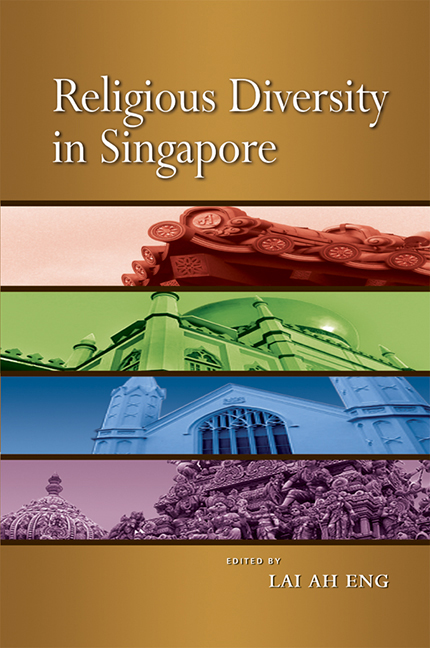Book contents
- Frontmatter
- Contents
- List of Figures and Tables
- List of Appendices
- FOREWORD
- PREFACE
- Acknowledgements
- The Contributors
- Abbreviations
- Glossary
- INTRODUCTION
- PART I The Landscape of Religious Diversity
- PART II Religion in Schools and Among the Young
- PART III Religion in the Media
- 17 Religious Reasons in a Secular Public Sphere: Debates in the Media about Homosexuality
- 18 The Internet and Religious Harmony in Singapore
- PART IV Religious Organizations in Social Services
- PART V Interfaith Issues and Interaction
- Index
17 - Religious Reasons in a Secular Public Sphere: Debates in the Media about Homosexuality
from PART III - Religion in the Media
Published online by Cambridge University Press: 21 October 2015
- Frontmatter
- Contents
- List of Figures and Tables
- List of Appendices
- FOREWORD
- PREFACE
- Acknowledgements
- The Contributors
- Abbreviations
- Glossary
- INTRODUCTION
- PART I The Landscape of Religious Diversity
- PART II Religion in Schools and Among the Young
- PART III Religion in the Media
- 17 Religious Reasons in a Secular Public Sphere: Debates in the Media about Homosexuality
- 18 The Internet and Religious Harmony in Singapore
- PART IV Religious Organizations in Social Services
- PART V Interfaith Issues and Interaction
- Index
Summary
INTRODUCTION
A secular public sphere is neither in practice nor in theory a straightforward arrangement. For one, the distinction between the religious and the secular is a false one. Secularism has religion-like qualities, even dogmas, rituals, cults of personality and leaps of faith; just as religions can be, and have been in history, tolerant, inclusive, self-reflective, self-critical, adaptable, philosophically rigorous and even radical. Instituting strict formal secularism can have the effect of distorting free and open communication in the public sphere, by excluding legitimate religious reasons and thereby eliciting a defensive and even fundamentalist reaction from religious communities. A conceptually false dichotomy in this way turns into a battle line, preventing real discussion and debate. An insistence on formal secularism is therefore at least partly responsible for a distorted public sphere that is defensive, dogmatic and disengaged.
The formal secular public sphere in Singapore cannot be understood without considering the mass media. With its long-standing role as a key nation-building tool of the government, the media has the power to shape what can be said in the public sphere, determine how and when it is said, and decide who gets to say what, all according to the parameters laid out by the state. This chapter examines the role of the national media in admitting religious reasons and arguments into the secular public sphere, looking closely at the way that it stage-managed public debate in 2003 over the question of non-discriminatory hiring policies in the Singapore civil service with respect to homosexuals. This was an issue that the then prime minister (PM) had raised in the international Time magazine in an interview probably meant more for the attention of prospective foreign talent hesitant about working in sterile Singapore, but turned into an issue that sparked some heated reactions from Singaporeans.
This sympathetic acknowledgement (though by no means the decriminalization) of homosexuals by the government in 2003 signalled increased levels of openness perceived by some religious communities as moral degeneration and even a betrayal of the government's moral basis of authority.
- Type
- Chapter
- Information
- Religious Diversity in Singapore , pp. 413 - 433Publisher: ISEAS–Yusof Ishak InstitutePrint publication year: 2008

